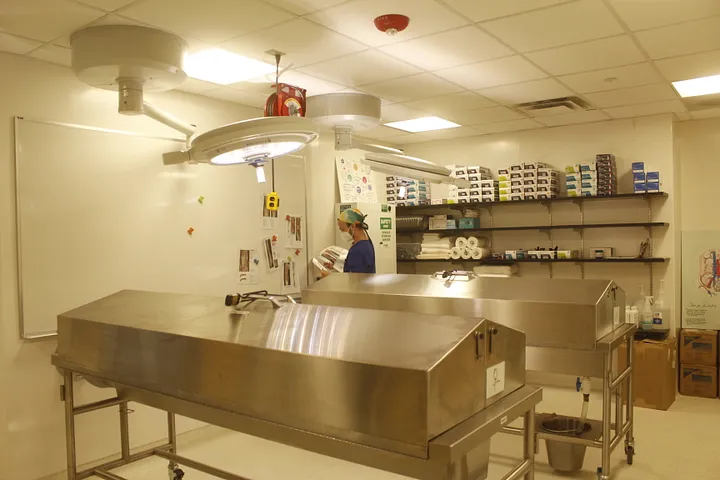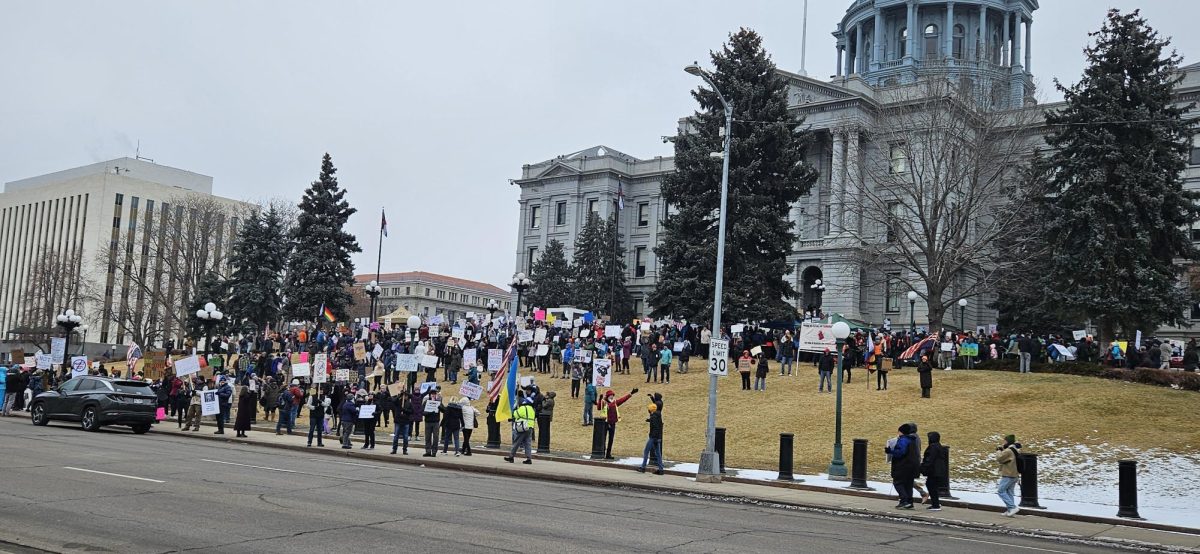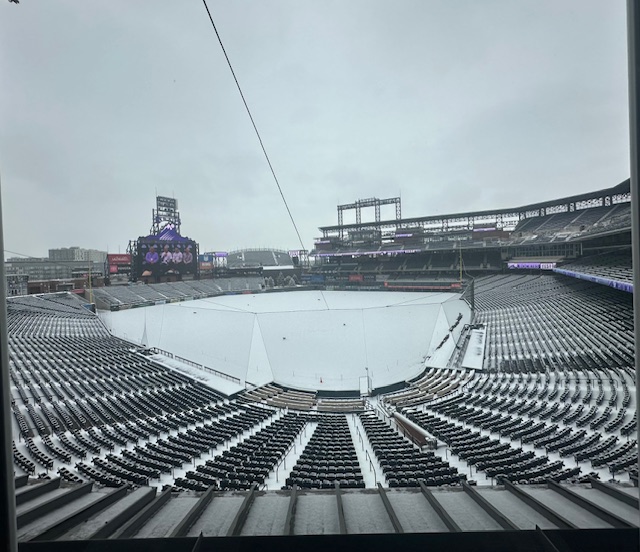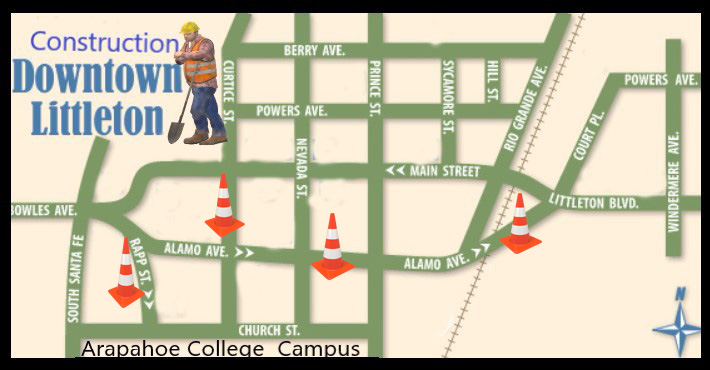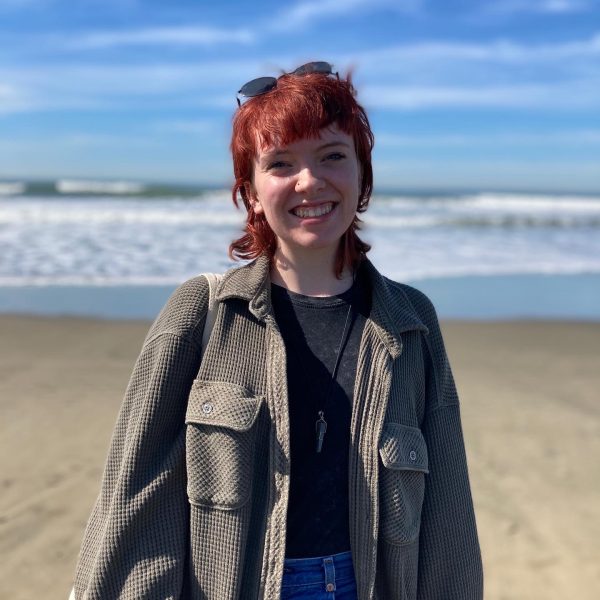At Arapahoe Community College, teachers come in many forms. Some teach full-time. Others—like librarians—just teach a class here and there. Some may not even be technically considered teachers, though they teach students every single day. Some are dead.
ACC’s Body Donor Lab gives students the opportunity to learn about anatomy using real human bodies. The body donors are housed by ACC and used in several classes at ACC, as well as to teach other visiting students.
The program is currently run by biology professor Molly Ostwald. Ostwald has run the program since she started teaching at ACC in January of 2020, though the program has been running since 2003.
Body donors are individuals who decide that once they die, they want their bodies to be used for educational purposes. In Colorado, after they are deceased, they go to the Colorado State Anatomical Board, where they are screened for diseases before being embalmed. Then, a few months later, the board will distribute them to medical or educational institutions.
After schools are done with the bodies, they are transported back to the state anatomical board.
Every year, the board hosts a nondenominational memorial service for all of the body donors at the University of Colorado Anschutz Medical Campus. The donor’s cremated remains are returned to their families, or are buried in a plot owned by the anatomical board. The service is attended by families, teachers and the students who worked with donors.
ACC’s lab acquires body donors from the state anatomical board—which is housed at the Anschutz Medical Campus.
Once the body donors are at ACC, they’re housed in a room specially designed to store body donors. The room has special ventilation systems installed to ensure that students aren’t exposed to harmful chemicals—such as formaldehyde—while working with body donors.
After coming to ACC, body donors are prosected. Prosection is a similar process to dissection—except bodies are prepared to be viewed by others and used as an educational resource.
“When you dissect something, you’re done with it,” said Ostwald. “When you prosect something, you’re preparing it for people to learn from.”
After body donors are prosected, students come into the lab and observe the prosections, spending time with the bodies and learning about anatomy from them. According to Ostwald, students that observe prosections come from a wide variety of programs, such as anatomy, physiology, physical therapy, mortuary science, emergency medical services, and more.
The lab sometimes hosts high school students from nearby schools as well, if students are in anatomy classes at their schools, or if they are members of clubs such as Future Health Professionals—formerly known as Health Occupations Students of America.
“[Students] get some time with the body,” Ostwald said of the observations. “They learn about the heart. They hold the heart, the lungs, the muscles, whatever that individual body has.”
Observing the prosections allows students to learn about anatomy generally, but really allows them to learn about how one specific person’s anatomy looks.
“One of the fun things is that each body is different,” Ostwald said. “So you never know what you’re gonna get. Our current female has two artificial knees. So even though students can’t see what a normal knee looks like, they get to learn what an artificial knee looks like instead.”
Though a variety of students learn from the body donors, the students that spend the most time with them are in Advanced Human Anatomy. These are the students responsible for prosecting the body donors.
However, prosection is not the first step in a student’s journey of learning about anatomy.
Before taking Advanced Human Anatomy, students must complete Human Anatomy and Physiology 1. Most students have also completed Human Anatomy and Physiology 2—though they are able to take it at the same time as Advanced Human Anatomy. These requirements ensure that students are prepared for the hands-on learning the course offers.
Once students are in the course, they get to dive right in.
Each week—for 16 weeks—the class meets for a four hour long lab. To start the lab off, students check in with Ostwald—and each other—about what they’ll be working on for the day. Then, they get to work, starting with the muscles and skin—progressing through the donor body as the semester passes.
Throughout the semester, students take practical exams—naming body parts based off of the body in front of them. Students also have weekly pre-labs—though the bulk of the course is based off of prosecting the body donors. The semester is split up based on which part of the body students are focusing on—focusing on the front of the body, back of the body and the organs.
Due to the setup of the lab, the class is only offered once a semester with a relatively small class size. There are only five Advanced Human Anatomy students per semester.
According to Ostwald, the course always fills up quickly, drawing in students from a variety of disciplines. Often, anatomy students are majoring in nursing, physical therapy, pre-med or mortuary science.
“Students are either trying to gain that competitive advantage to get into medical programs,” Ostwald said. “Or people who are just trying to learn smart anatomy before they head on some nursing for more science.”
For students who have completed the class, Ostwald says that the practical learning offered in advanced anatomy helps prepare them for later classes.
“I actually had a [former] student stop me in the hall the other day,” Ostwald said. “They were like, “We just had our first embalming lab, and I wasn’t scared at all. I knew exactly what to do because of that class.’”
For Ostwald, running the body donor lab is a full circle moment.
After dropping out of high school and getting her GED, Ostwald began her journey in higher education at ACC in 1994. While she was taking a biology class from Vickey Trammell—who later started the body donor program in 2003—Ostwald saw a flier for science club, advertising a field trip the club was taking to a cadaver lab.
A friend was interested in going to the cadaver lab, so Ostwald tagged along. Though she had no experience with anatomy before the lab, she enjoyed it. After that, Ostwald found herself being drawn back towards anatomy, eventually going to graduate school for a masters degree in anatomy.
After graduating, Ostwald began teaching, working as an adjunct at a variety of schools—including Front Range Community College, Community College of Denver and Metro State University—before coming to ACC in 2020.
For Ostwald, working at ACC is “such a unique opportunity” because of the body donor lab.
“It’s an amazing gift that you experienced during this class,” she said. “It’s not just that you learn anatomy and how the body is put together, but you learn about your own humanity.”
According to Ostwald, because of the unique nature of the class, conversations within the lab tend to delve deep—especially when discussing the gift that body donors have given to students.
“You have some really deep conversations in that lab,” she said. “Because you get really connected to a human’s body. It’s somebody who gave you the most amazing gift and it’s very intimate.”
For Gavin Lee, a mortuary science student who is currently in advanced anatomy, the class has been “a smattering of intense moments.”
“A body donor is legitimately a really spiritual experience for me,” said Lee. “ [There’s] this person there. What they wanted was for me to do this right now was for me to learn and feel more comfortable around the body.”
For Lee, working with the body donor has allowed him to not only learn more about human anatomy, but to become more comfortable with the human body.
“You learn this intense respect for the dead and intense respect for another person that you’re caring for,” Lee said. “Having learned that is a very valuable piece to take into mortuary science. Being able to know this was a person and is still a person, and we need to respect them.”
For Lee, taking advanced anatomy has made him feel more prepared to move into mortuary science in the future.
“I’m really excited to go forward into my mortuary science classes already knowing what [the body] looks like,” he said.
For Ashley Clement, another mortuary science major taking advanced anatomy, the class has shifted her perspective of the body.
“You see a heart and the size of a heart,” Clement said. “You think, this does everything for us. This keeps us alive, and it’s this thing that I’m just holding in my hand right now.”
The first time she saw “the body that guided [the donor] through his entire life” Clement said was a very formative experience in the class.
“Seeing the body for the first time was just very like, wow, this is real,” she said. “This is happening. This is a human being who has given us this gift to like learn on on a body.”
For Clement—who plans on donating her body to science—the class also offered a glimpse into what her future could look like. Although there are a variety of ways her body could be used once it is donated, she’s enjoyed getting a peek into one possibility.
“This could be me someday and someone else could be doing what I am,” Clement said. “ I could do this for someone else and be their learning tool.”



